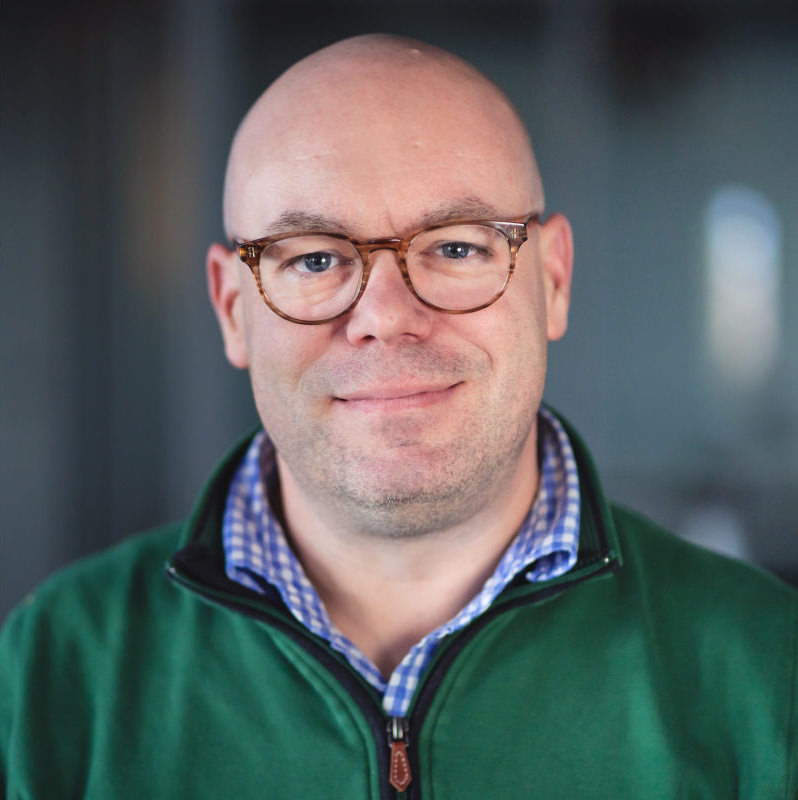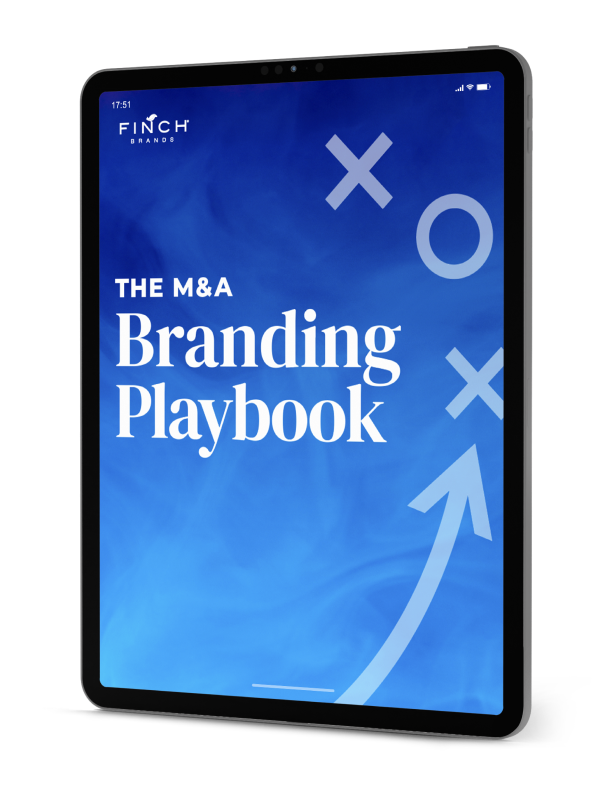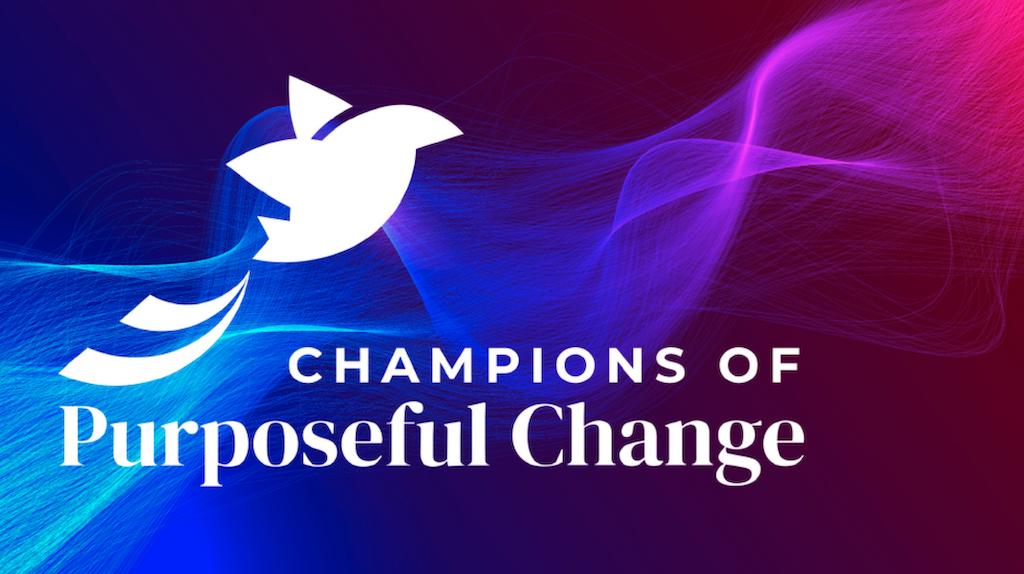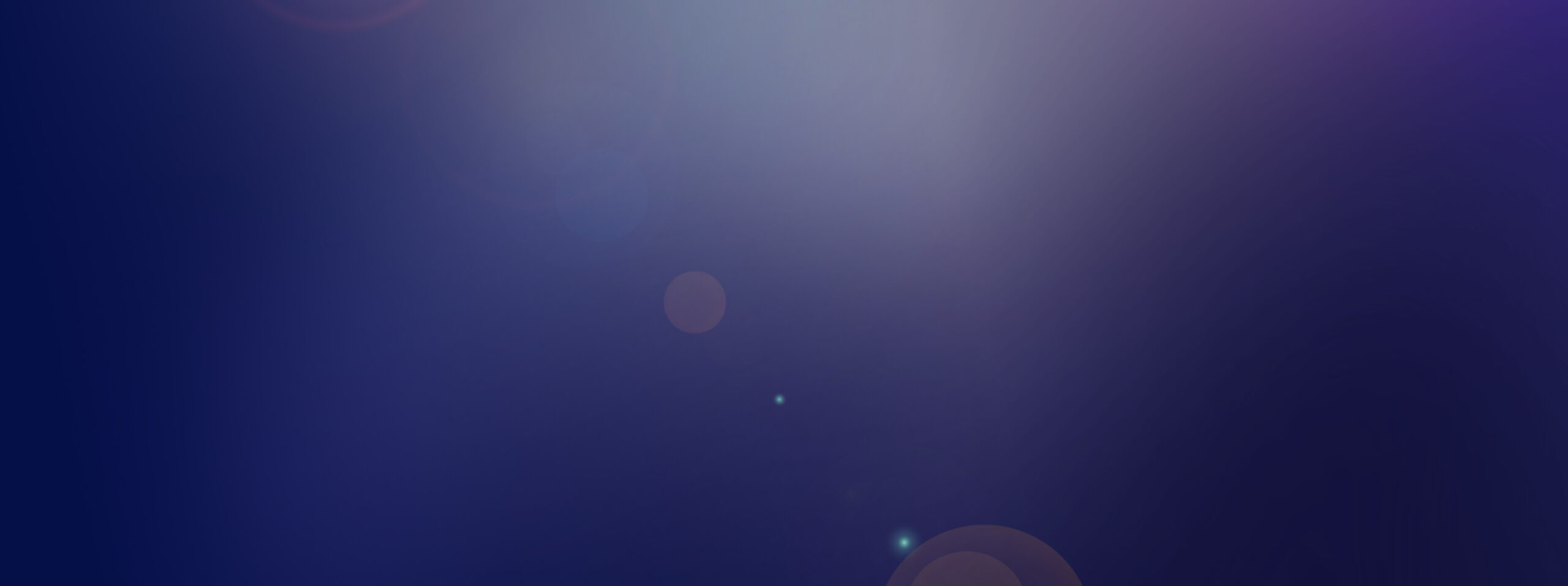Building Brands Through Acquisition – Amy Kothari, My Alarm Center
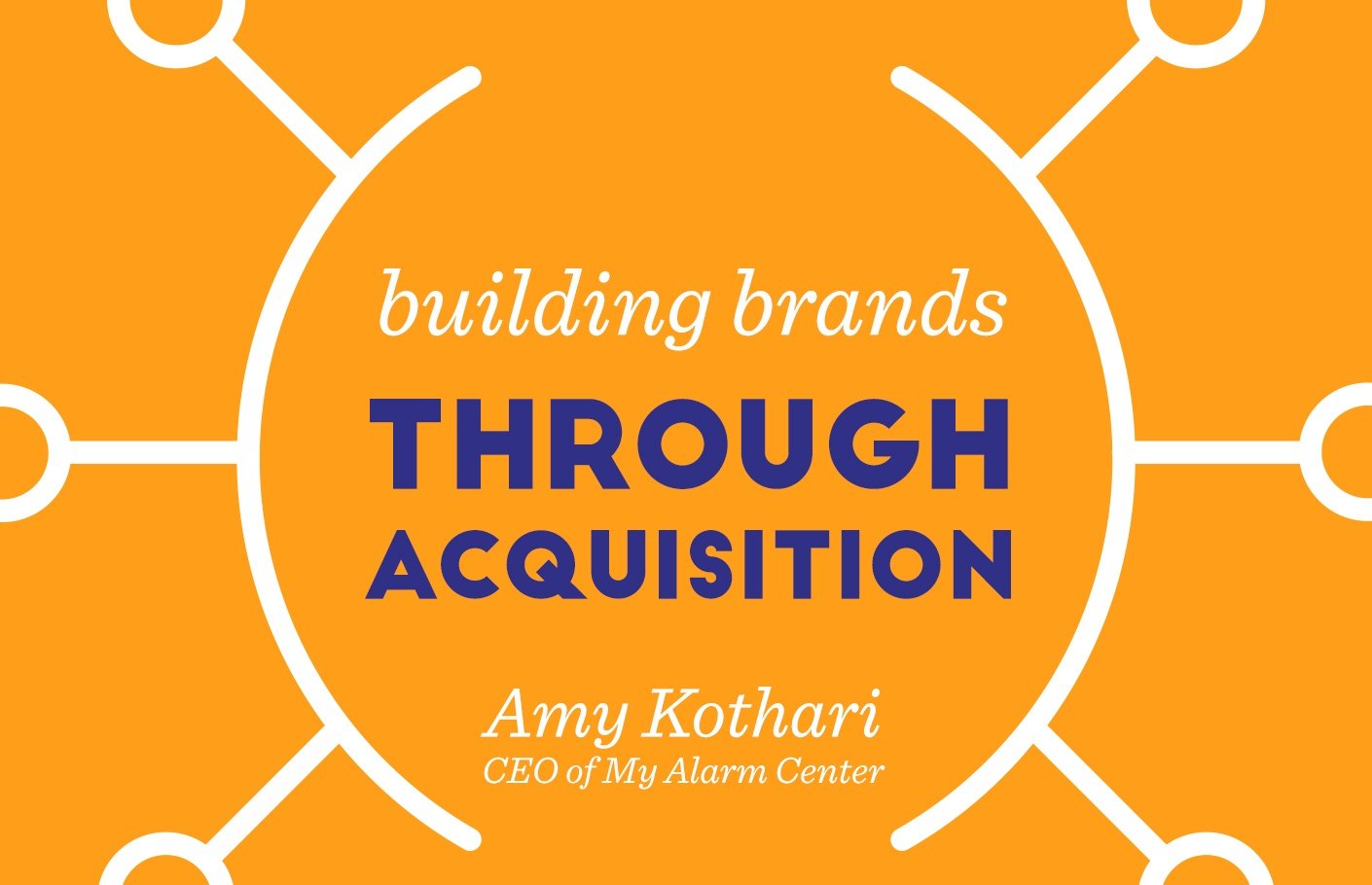
In this episode, we interview Amy Kothari, CEO of My Alarm Center. My Alarm Center has grown and expanded into new markets by making strategic acquisitions throughout the years. Hear from this practitioner as she details how she and her team thought through the difficult decisions around brand architecture and identity. If you like our podcast, please subscribe and leave us a rating!
Podcast: Play in new window | Download Subscribe: iTunes | RSS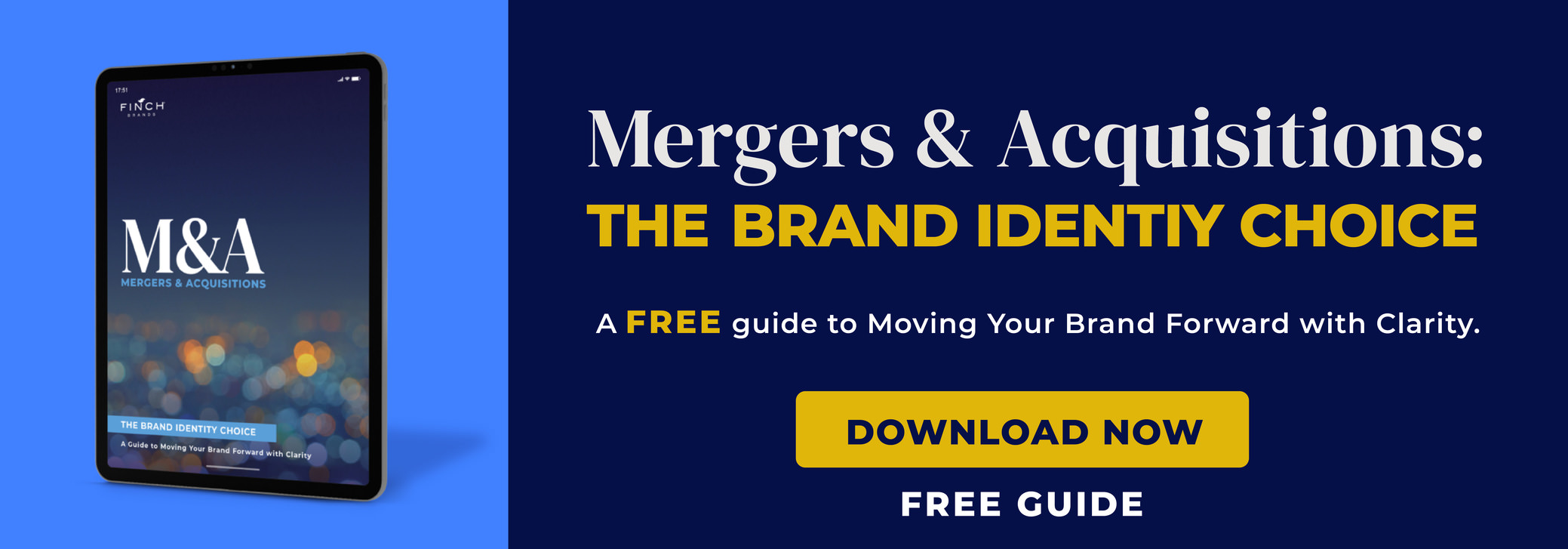
Transcription:
Bill Gullan: Greetings, one and all. This is Real-World Branding. I’m Bill Gullan, President of Finch Brands, a premier boutique branding agency. Thank you for joining us as we continue along with our month long focus on the particular branding considerations related to an M&A transaction. We’ve brought a practitioner and a business builder and a leader, onto the show here to speak about her experience building My Alarm Center is the consumer-facing name, and Alarm Capital Alliance I guess is the underlying corporate nomenclature.
Amy Kothari is, as she will detail, a fascinating leader in a really interesting business that perhaps she didn’t really understand how interesting it was going to be until she got into it. Along the way as that company has grown, they have faced a number of different decisions in real life, in practical ways that relate to how to deal with mergers and acquisitions, and how to weigh brand equity factors as you go to market in the wake of a growth strategy that is based on acquisition. She has some tales from the journey and how she and her team thought about integrating businesses effectively to both create larger integrated brand equity, while also being very mindful of the signals that are sent to consumers and others when it comes to these types of decisions. So enjoy. Amy Kothari.
Bill: We are here at the sprawling Newtown Square, PA headquarters of My Alarm Center with Amy Kothari, President and CEO. We’re so happy to have you with us.
Amy Kothari: Thank you. I’m happy to be here.
Bill: This has been, and we were talking about it a little bit before the microphones got set up, about the most interesting journey for this organization. Perhaps, though, we start a bit with your own journey to the security space and to My Alarm Center. Could you walk us through some of the major milestones on your own path to this point?
Amy: Sure, absolutely. It was a somewhat happenstance journey and I didn’t grow up saying, ‘I want to be the CEO of a home security company one day.’ My first job out of graduate school was actually with Comcast.
Bill: Yep. I’ve heard of them.
Amy: You’ve heard of them?
Bill: Yeah, yeah.
Amy: Yeah, a little local company, and they were a little local company when I was there. That was in the early 90’s and I was in their corporate finance group and then we moved to Atlanta, my husband and I, and I joined Cox Communications, so on the finance side, but still in the cable industry subscriber business, recurring revenue.
Then when we relocated to New York, I just thought along the lines of I’ll go to Cable Vision now, it looks like I’m pursuing a path in the cable industry. Which at the time, was actually very exciting – it was hot, it was just coming around the corner. When I got to New York, my bankers at both Comcast and Cox, was CIBC, Canadian Imperial Bank of Commerce, they said we need some industry experience, come be a banker.
At 28, 29 years old, you’re like sure, that sounds like fun, so I went and took my Series 7, Series 63 and became a banker. I banked the cable industry, as well as other recurring revenue subscriber based businesses, so I was in the media-telecom group at CIBC. Media telecom covered newspaper, outdoor advertising, cable, telephonic, all those subscriber based businesses, including home security.
I don’t think they ever knew where to put home security in banking, and so it landed in the media-telecom group and it was just happenstance, working late one night, someone came in and asked me if I knew about the security industry. I thought they were talking about trading securities and I ended up working on a deal called, Monitronics, which is one of the largest companies today, it’s owned by Ascent Media.
They were my client for the next six or seven years, so I ended up getting to know the home security industry quite well. Any deals that came across the desk in that industry, I covered. Then I was relocating to Philly, once again with my husband and my family, and an opportunity came up, a bunch of individuals who were investors in the outdoor advertising world had invested in a form of a home security company, here in Philadelphia. That company was a finance company that was basically acquiring customer contracts from small Mom and Pops.
Bill: Right, of which I’m sure there are many-
Amy: There are about 12 to 15 thousand home security companies in the country. There were then and there are close to that now, despite mass consolidation. There’s very few barriers to entry, to get into this space. The majority of them have revenues of less than two million dollars.
These are small Mom and Pop businesses, who many of them are electricians, technicians, or handymen who decide to start a home security business. It is a fruitful business to go into, but what ends up happening is they’re so small that a lot of them didn’t have access to capital, or they would invest in the business and grow it too fast, and borrow to do so, and then be laden with debt. What we did was provide an opportunity for them to sell us their accounts, it’s basically revenue factoring.
We would buy ther customer accounts, we would collect the recurring revenue from it, they would become, that dealer who sold them to me, the small business owner, would become my subcontractor and he would service those customers. He would get any referrals off the base, he’d get all the service revenues off the base and as he created more customers, he would then sell those to us.
Over time, the business model really evolved. Just taking a step back a minute, when I had been introduced to this company, I came in as a part-time CFO to help them out, it was a small company, just starting to really grow, get their financial reporting and everything in place and it was a very interesting part-time job, except it wasn’t part-time very long.
I was the CFO, started building out the operations and that was the end of 2002, and I took over as CEO, in July of 2004 and we parted ways with the previous investor, or the previous CEO, I should say. We started to grow the business and really started to realize that we were good at servicing customers.
We wanted to really continue to grow this business, and so one of the things that we had in place was, because we were behinds the scenes financing it, we let all of the sellers, who sold us the accounts, keep their brand name.
It was one of the values that we brought to the table, that you can keep your identity, keep your brand and nobody needs to know that you sold your customer contracts to us. We actually billed in the name of all those companies, we answered the phone in the name of all those companies, and over time, that started to become somewhat cumbersome.
Bill: Oh, I can imagine.
Amy: Then the other thing that started to happen was some of them may have gone out of business or retired. Now we’re left with a customer base who doesn’t know us, so it was a very big decision that we had to make to thread all of those accounts together without biting the hand that feeds us and allowing the sellers to keep their names when it made sense.
What we did was we took an approach of saying, ‘Look, we’ll leave Joe’s Alarm, Bob’s Alarm, and Mary’s Alarm names in place, but we want to make them all members of a bigger organization.’ In hindsight, I think that we should have done some brand work to really come up with a brand name that tied them all together.
Branding is something that
customers are very sensitive to.
We answered the phone at that time, generically, as ‘The Alarm Center,’ and turned out, the customers thought that was the name of this billing company, because that’s what they thought of us, as the billing company, so we just went with that, so that’s how we became My Alarm Center.
Nothing sexy about that at all, so it became Jim’s Alarm, a member of My Alarm Center. That’s how we ran it for years and then as our industry started to shift, the opportunity to acquire these accounts got a lot more expensive, a lot of other folks started doing the same thing. We no longer were one of few that were acquirers of these accounts and we thought that it really probably made sense to start selling direct to consumer.
Part of that decision also came from, in many of these markets, where I said earlier, some of the sellers may go away, they went out of business. We started getting really large concentrations of accounts in a single market, and next thing we knew, the phone started ringing, customers are saying, ‘Can you come and install an alarm system, my neighbor has Jim’s, an alarm member of My Alarm Center.’ But when they called, they would ring in here, and we did one major acquisition in Seattle, where we bought about ten thousand customers, and the seller of that did not want us to use their name, so it was a unique situation.
We branded that as My Alarm Center and then we started selling to the customers, and we were like, ‘Oh, we’re really good at this, and it’s a lot cheaper’, you only create one account at a time, as opposed to buying ten thousand, but it was actually a lot less expensive from a creation cost perspective to create those customers.
We started doing it slowly and then it started getting cost prohibitive to continue to acquire, so we said let’s start building out, what we call, our organic engine and selling direct to consumer. Now we have a lot of names of companies, but they’re all a member of My Alarm Center.
In some markets, it’s just My Alarm Center. The beauty of that setup, of having something a member of that ‘powered by Intel approach,’ is that in the event that he did go out of business, we could strip his name out and there’s no disruption to the customer, because branding is something that customers are very sensitive to.
They’ve all gotten to know My Alarm Center, our website is My Alarm Center, when they pay their bills online, it’s My Alarm Center. Now we made a decision to go and buy companies, not just collections of customers.
We went out and acquired four small alarm companies in major metropolitan areas that had very significant brand recognition in their markets, so we acquired a company up in the Hampton’s, in South Hampton, a very high-end home security business called, Scan Security, in business for 25 plus years. Another business in Atlanta, Alarm Monitoring Service Atlanta, in business over 25 years. Hawk Security in Texas, in business 30 years and Hawk Electronic goes back even further than that. Then a company called ACS in LA, that has been in business the same, 30 years. All of these branches were owner operated, in business 25 to 30 years, entrenched in their communities. Really great consistent, predictable, month-over-month sales, so we didn’t have to recreate anything.
We brought them in, spent a lot of time centralizing some things, cutting some costs out of them that could be done at the corporate office. Then looking at ways to help them grow even more than they were growing before, but one of the decisions came at that time was what do we do with the brand names?
After really spending time looking at it, we would have really hurt ourselves if we pulled out their names, and we thought, you know what? The approach we’ve had is going to work for this. Hawk Security, today, is Hawk Security, a member of My Alarm Center. It has helped our business to be able to capitalize on those brands.
LA is a great example of this, because the branch there is in Bel Air. Literally, the street signs say protected by ACS Security. The whole community is ACS. As one of my colleagues likes to say, the yard signs for ACS security are like pink flamingos in everyone’s yard. It’s everywhere. We’ve just continued to build on that name that was in that market, so it’s made a lot of sense how we’ve grown the business.
Bill: Absolutely. It’s a fascinating story of situational decision making around brand architecture. The role of not only the corporate strategy and the corporate infrastructure in supporting, and in the brand experience, but also the individual equity levels across these geographies. When you have thought, on the early side, as Mom and Pop’s fade away and their name doesn’t mean as much, strengthening the own proprietary brand as you seek to acquire new customers, but then having the discipline and the restraint to let Hawk be Hawk and others who’ve done these things.
Amy: Yeah, no, and it’s a challenge sometimes, because you want to impose the way you do it and even in running each of those, really going down and spending time at what are now my branch offices and understanding their culture and the way they do things. When we first got in there, we started imposing a lot of our structure on them and we found that it’s much more of a compromise than that.
Bill: Sure, sure. Initially, it seemed like the emotional side of that was important to the sellers of these accounts.
Amy: Yeah, huge.
Bill: Then it became much more of an operational and a growth oriented process of making decisions. It’s a fascinating story and I think one of the interesting things is where the company goes from here, in terms of brand architecture. One thing I wanted to ask you about and I definitely want to hear more about your career and other things, I know there’s been a recent launch of a new concept here. Would you tell us about Live Secure and take us through the thinking around branding it in a distinctive way, next to and separate from My Alarm Center.
Amy: Live Secure was the first time we ever actually branded something. With all of the names that we have, of all that we do business in all these locations and the dealers names that we’ve kept in place and My Alarm Center, we’ve actually never created a brand. This was a really big undertaking.
You have to take a step back a minute to think about what’s going on in the industry. So the industry of home security has become home security and home automation. The emphasis on protection has moved much more to connection. Connection now defines the protected home. Over that time, what’s happened is another segment of the market has opened up, so because of technology, we’ve moved away from plain old telephone lines being the basis of these systems to cellular.
With the cellular home automation interactivity and inter-connectivity, this self-installed/DIY market has opened up. There are a number of significant players in it, the one you probably see the most, from a branding perspective and marketing, is Simply Safe. Runs a lot of ads. There’s Protect America, there’s Front Point Security. There’s a number of options of DIY, Do-It-Yourself, home security monitored solution. There are other products on the market you could buy at Home Depot or Lowe’s that are off the shelf, self-install, but self-monitored.
Okay, so these are all monitored solutions, you’re being monitored by a security central station. We started looking at it as a way to have just another option, but also, I think it’s a really important segment of the market, that there are individuals out there that would rather not wait for someone to come in and install it, because the technology has gotten a lot simpler, it is much easier to install these systems. We basically use the same system on our professional installs and our self-installs, and we also look at our market as we’re not a national company.
We’re a coast-to-coast regional company – we have these regional pockets of growth. We’ll have consumers, customers who call us and they’re moving, I’d like to be able to offer them a solution. They’re moving to a market I don’t serve, I can now offer them another solution. It’s a retention tool, it’s also a solution that bodes well for our existing customers who may have a summer home or may have a grandparent, or they may have a child who needs just a basic system, so that’s what we’re seeing a lot of the use for right now.
We also are seeing more and more of customers calling and saying, ‘Look, I can do this myself.’ People are getting more and more comfortable with that, so we made the decision to enter into the DIY market. The decision was one that if we’re going to do this, we’re going to partner with a really high quality product. We partnered with a company called, [Kwasis 00:15:56], a newer manufacturer on the market, out of California. Really great product, it’s very clean, very simple. Alarm.com is the back end, so that’s a platform for the home connectivity and it comes in a nice clean box and everything and easy to install. Doing that was a lot of time spent in coming up with the brand and the name.
I would love to have done a name like, Vivint, which is one of the big home security companies in our industry, or the Locks, August Locks. A one word kind of name that’s fun. One of the things we learned in the branding process is it takes a lot more marketing and educating, and frankly, dollars to get a Google recognition on a name out there. We realized we really didn’t have the luxury of doing that, so we really had to go with a name that said what we did and that’s how we came up with the Live Secure name. After a lot of iterations, a lot of middle of the night thinking, came up with the idea of doing Live Secure.
Bill: Right. Creatively, it’s interesting. From a strategic perspective, and I think I know the answer, but I’d love to hear your take on this, you have very seldom pursued the path of least resistance, in terms branding. You have set the organization up based on situational infrastructure characteristics or being the obvious, easy way would have been to subsume these sub brands and boom, boom, boom, but in this case, the company made the choice to brand Live Secure as an independent brand, the easier way would have been My Alarm Center You, or something.
Amy: Yeah, it was actually a lot of thinking, that’s a whole separate subject-
Bill: Yeah, so what’s kind of the bread crumbs of that thinking?
Amy: Was that it really is a completely different product.
Bill: Right, and customer, right?
Amy: It’s completely different customer, different demographics, different sale process, different customer support process.
Bill: Right, right.
Amy: A lot longer call times, you’re on the phone, we’re not rolling a truck, we’re spending a lot more time on the phone, so our reps need to be trained in a very different way. Everything we looked at was this was a different kind of business model.
We also wanted to be able to experiment with it and play with it and if it really worked. We talked about blowing it up, and sure, it’d probably get pulled into My Alarm Center, but today, it’s not even Live Secure, a member of My Alarm Center. It is just Live Secure – totally independent and we are trying something completely new.
So there’s a little bit of insulation that you want to put in place when you do something like that. That was a lot of it, and I think it was the right thing to do. It’s something that is growing organically very nicely for us.
Bill: Great.
Amy: We have not invested, to be quite honest, a ton of marketing dollars into it. Partly because our branch growth, on the direct to consumer side, on the professional install, really, really started to take off this year. Our growth year-over-year, I mean, I think, it’s been about 20% growth, year-over-year from 2014 on, through those branches.
Bill: That’s great.
Amy: We’ve really directed the dollars in the last year to where we knew we’d get significant returns, but the DIY piece at Live Secure, we’re just slowly turning up the heat on that.
Bill: Well, it’s great. What an exciting time, in terms of dynamics that maybe have been shaping, monitoring the do-it-yourself concept, I think, arrived with, you know, you saw it in WiFi and cable modems. You saw it with cable, you saw it with-
Amy: Technology has evolved so much. There really was very little that ever changed in this industry for 25 years. There’s been more change in the last five years than there were in the last 30 years. The adoption of that by the consumer, and frankly, one of the things that’s helped that is a lot of the bigger players coming in.
Comcast is now a huge player in the home security and home automation side of things, and a number of other companies that are out there, that are doing a lot of marketing, a lot of advertising, a lot of educating and so we’re just seeing the tide rise overall, in terms of the customers that are out there.
Bill: I know the company also has very compelling stories about things, other forms of monitoring, carbon monoxide and other things that create a whole bundle of safety and security.
Amy: Yeah, and we put a lot of emphasis on that, we call that the ‘life safety’ basket. You look at your system that you’re putting in the house and you have your regular home security, burglar alarm protecting you, but then you also have all of this home automation, smart home technology. You can adjust your thermostats from your phone, you can open and close your front door, lock and unlock your front door, remotely arm and disarm it. You have cameras, so that whole home automation side.
Then the third basket is this life safety basket, which even if you don’t use any of that technology, even if you never arm your system, your home security system that we’re going to put in for you, we highly recommend all of them have smoke and fire detectors, carbon monoxide. That those are the things that even if you never use the system, it’s still working for you and it’s protecting you.
Bill: Right, and stories of situations where that wasn’t in place are so moving and emotional and scary.
Amy: Oh, they’re huge, yeah, of homes that have, just what we call beep and burn fire detectors, that if you have an elderly couple that take their hearing aids out at night, I know my grandmother takes her hearing aids at night and she can’t hear anything and that thing’s beeping, it’s going to burn. Then I had the customer once who said we don’t need the home security system because we just got a dog and our response to them, does a dog know how to call the fire department?
Bill: Right, right. Can the dog sniff carbon monoxide … Right.
Amy: Did the dog smell carbon monoxide and it’s amazing, when customers hear that, they do stop and think. I’m such a good example of it, I mean, I use, obviously, I have a great home security system in my house.
Bill: I would hope, yes.
Amy: I don’t arm it.
Bill: Right, right.
Amy: I would never get rid of it, because of the life safety features and I’ve gotten addicted to all of the other home automation stuff.
Bill: Sure, sure.
Amy: I love that I can turn my thermostat up and down from bed at night, or if we go away on vacation, you know, ‘Oh, we forgot to turn the air conditioning off’, and it’s fabulous.
Bill: You’re coming back in three hours, time to warm it up or whatever.
Amy: Yeah, once you start using some of those things. We’re seeing, also, that the industry is shifting because customers are becoming much more addicted to these systems and the beauty for us, is that’s better retention and less attrition.
Bill: With regard to the transition and metamorphosis of this company, as you said, when you arrived here as a part-time CFO and then were in the lead chair, this was about acquiring and then servicing accounts. Over time, it has become a brand with a public face, it has become a brand with some sort of product development and innovation capabilities. Can you speak on the inside, in the terms of outlook and infrastructure and team, and culture and other things about this 15 or so year growth story at this company and what you’ve seen and how you’ve evolved the emphasis as the company’s business has evolved and just a bit of that path?
As a smaller business, how
do I differentiate myself?
Amy: Sure. We went from a B to B business. Even though our end customer was a consumer, it really was a B to B business. We were making business possible for the small business owner. A byproduct of that was our relationship with the end-user, so we went from that B-to-B model to today, being truly a B-to-C model and that end-user is our primary focus now.
We still have relationships with sellers and dealers and we still do acquisitions of accounts, but we are, even in those cases, we’ve learned to be much more intimate with the customer. That evolution is huge, because instead of dealing with 50 businesses or 200 businesses that we are working with at any given time and we had a whole dealer relations department that worked with those businesses, you’re now dealing with 200 thousand customers.
Not 200, 200 thousand customers, and so getting in that mindset of at the end of the day, what is the most important thing and it’s a life safety and the protection and the satisfaction of those customers. I can’t compete with the big companies, ADT or Comcast on marketing dollars, or anything, frankly. We all, at the end of the day, are providing the same product, so how do I, as a smaller business – I’m in the top ten, but I’m still a long way away from the size of ADT – how do I differentiate myself?
Changing the culture and the mindset of the business to really focus on that customer and the customer experience, we call it, it’s the CX, the customer experience, implementing NPS, net promoter scores throughout the business, incentivizing call center reps to not just deal with the issue at hand, but really satisfy that customer. That’s been a big culture shift.
Bill: Yeah, I’ll bet.
Amy: Implementing some layers of management to train along those lines and really focus on the customer and the customer experience. The other big change is, when I came in here, I was the 12th employee, we have 600 employees today.
Bill: Wow, yeah.
Amy: The majority of those employees are sales, in a sales group, outside technicians, that whole culture, I’m now dealing with huge sales teams. I’m close to 100 sales reps in Texas and that’s a whole different personnel management approach.
Bill: Yes, I’m sure.
Amy: A couple years ago, we never had a head of HR. Just my executive team, we divided and conquered on HR. You figure out benefits, I’ll do this, whatever. We had to hire a VP of HR in a very serious way and we have to deal with very serious issues now.
Bill: Yeah. I’ll bet, I’ll bet it was.
Amy: Because now it’s a whole different mix of employees, who, you also have to remember your employees are also your customers, and so really making sure that we’re satisfying them and addressing all of their needs so they will ultimately satisfy and address the needs of my end-user.
Bill: We’ve taken as much time as we said we would and we know that you’re busy, so one quick final question and this has been so interesting, we got a little bit into your own career path on the finance side and then into banking and then, ultimately, into operating. Any words of wisdom that you would share with those who’ve been inspired by what they’ve heard about your own development and the choices that you’ve made along the way? I know that there are young people, also, who come to work here and obviously look at your experience and are inspired and motivated by it. A couple words of wisdom that are important to you?
Amy: Yeah. I often get that question and they say, ‘What did you do’, and particularly being a female CEO and I have three kids, and I have a home that I run as well.
Bill: That’s a lot of stuff.
Amy: On any given day, it’s debatable which job is easier.
Bill: Right, I’m sure.
Amy: I think that I’ve worked hard. Believe in yourself. I’ve never doubted, you know, I can do any job, and then after the door shuts, I’m like, ‘Oh, my God, I don’t know what I’m doing.’
Bill: Right.
Amy: I’ll never forget, when I took over as CEO, I went into the conference room with all of my employees at that time and it must have been maybe 45 employees we had at that time, and I went in and I said, ‘I’m taking over as your new CEO’, and the first thing I said to them is, ‘I have no idea what I’m doing.’
Bill: I’m sure that was comforting, right.
Amy: Just being honest with them, say, ‘We’re going to do this though together and I will work really hard to figure it out’, and sometimes you end up being the best of who you could be by recognizing that you need to really work hard to figure it out and I’m going to put my head down, I’m not coming in here with any preconceived ideas, any assumptions. Just believe in your own abilities and that you’ll figure it out.
Then I think another thing, I think, is key, is finding people in those certain areas of expertise that you know that you definitely don’t know a lot about and getting people in those areas that frankly smarter than you. Once you developed a trust in them, letting them run with it.
If you ask any of my senior management team, and you’ve met a number of them, a number of the VP’s in the company, they’ll tell you that I am a very hands-off, from a direct management perspective. You got to get to that trust point first, but once I trust them and I believe in them, I work for them then. All of my staff has heard me say that I work for them. My job is to make their jobs possible and to make the company possible and whatever I need to do to help that, but I really trust them and I let them run with it.
Bill: That’s terrific and I think a great way and time to sum this up. Amy Kothari, President and CEO of My Alarm Center, thank you so much for your time and your insight.
Amy: Oh, you’re welcome, it was fun. Thank you.
Bill: Our thanks to Amy for joining us today and giving her perspective. It’s easy for us to talk about key principles of M&A, brand architecture, and they’re certainly valuable, but Amy’s lived it and led, and her insights, and general presence was so enjoyable and helpful. So thank you to her.
Our focus on M&A branding continues with additional content on our blog, as well as in this medium, as well as through a white paper that you can download from finchbrands.com that has all sorts of information about M&A brand choices, why they matter, and what that sort of finite list of options are for business builders and for leaders.
In the interim we love to continue the dialogue here. There’s three primary ways to support what we’re doing. One is to click subscribe, make sure you don’t miss an episode. I know we were not terribly prolific in the late fall and around the holiday season given other priorities, as well as our work on this series, but we’re back, and we hope to become an important and enjoyable part of your week. If you click subscribe you won’t miss a single episode.
If you are so compelled to give us a rating in the App Store, I think that helps make sure that our podcast can be found by other brand and business builders who appreciate content like this. Then let’s keep talking on Twitter, @FinchBrands or @billgullan. Same thing on Facebook and LinkedIn, other social media forms. We really appreciate insight, input, feedback, and all the rest. Signing off from the Cradle of Liberty.
